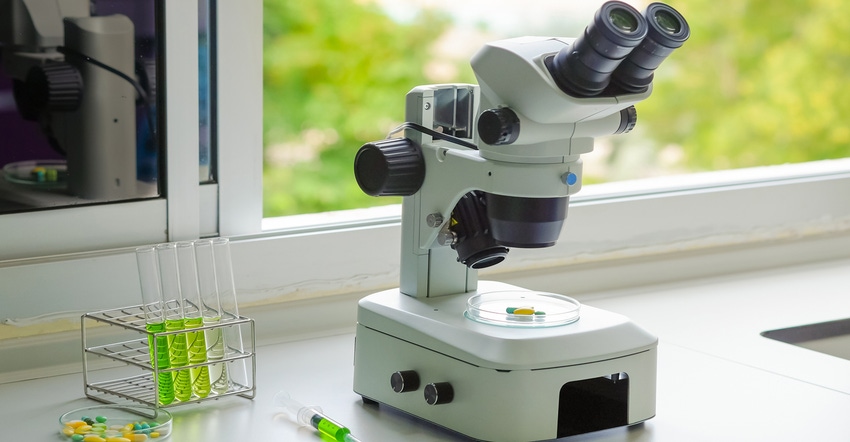Probiotics are popular ingredients, but to capitalize on demand, brands need to ensure their products are manufactured and tested in specific conditions.
April 5, 2018

Over the last decade, probiotics have taken the market by storm. In this rapid rise of products hitting the market, brands often scramble to ensure their products are manufactured to the highest quality. Unfortunately, many companies looking at probiotics as a marketing opportunity don’t understand the challenges associated with probiotic ingredients. The type of manufacturing facility used and unanticipated testing difficulties need to be considered before tackling this complex product launch. If producing a high-quality product is the goal, then choosing correct testing and manufacturing partners will make all the difference.
Probiotic ingredients have unique challenges. While they are commonly referred to as “good bacteria,” their high microbiological counts can contaminate surfaces and air quality of manufacturing or testing lab environments. These facilities are usually bacteria-free areas, and introducing probiotics brings a risk for contamination to the other clean, low-bacteria products. Additionally, many probiotic ingredients need to be stored under refrigerated conditions and have specific handling requirements. For these reasons, choosing manufacturers and testing labs specially designed to handle these types of ingredients is extremely important. Companies that do not understand the importance of proper handling or storage of their products can end up being disappointed when they realize they have low-potency products. These mistakes can be costly.
Qualifying vendors will ensure brands select partners knowledgeable about probiotic products and focused on quality. When choosing a vendor, brands can follow routine quality steps that can be verified by asking specific questions. This will help a brand choose a manufacturer that has a quality management system (QMS) in place. The qualification should also include questions regarding its adherence to FDA guidelines for dietary supplements. Following the Code of Federal Regulations (CFR), manufacturers should adhere to all aspects of the quality manufacturing process including personnel, facilities, record keeping, specifications, testing, labeling and more. Brands should also consider a manufacturing partner that has a facility designed for probiotic ingredients. This will help ensure the brand is working with a partner that can produce a quality probiotic product.
Before developing a new probiotic formulation, brands must contemplate many factors and decisions. Formulating with ingredients that will provide the health benefits and desired stability requires research and expertise. Ingredient suppliers will have valuable information about the shelf life of their probiotic ingredients, and an experienced formulator can be a guide when choosing the right ingredients for a developing product. The manufacturer may also have an on-site formulation department that can help brands navigate and streamline the complex process of developing and manufacturing probiotic products.
Choosing a testing lab is also a priority for ensuring a quality probiotic product. No two testing labs are the same and often have specialties in the methods they perform. For a microbiology lab to perform probiotic testing, planning and thought need to go into the sample flow of the microbiology space to avoid cross-contamination; not all labs are able to perform probiotic methods. Even in-house labs may choose to outsource microbiology assays due to air-quality concerns, use of specialized equipment, multiple dilutions, anaerobic chamber incubation and other requirements necessary to perform these methods.
Following GMPs (good manufacturing practices), testing starts with raw material potency, ingredient identity and adulteration examination. Blends and finished products should also be tested to ensure they meet label claims. The identity and assay methods for blended probiotic strains are usually challenging. Genetic testing is used to confirm identity, and these methods are still being perfected for multi-strain blends. To measure potency, the enumeration is measured in colony-forming units (CFU/g), and this testing is performed as one assay for the entire blend. Since each probiotic strain may have a different medium it grows best on, it often takes method development to determine the best testing for obtaining the CFU/g count for a blend. Working with a lab experienced with these specialty ingredients can help mitigate challenges to ensure successful testing results.
Stability testing needs to be completed if the label will include an expiration, or “best by” date. Stability testing will give needed data to conclusively establish this date. This testing can be a long, expensive and complex undertaking. Raw material supplier recommendations need to be taken into consideration when planning the stability study.
Real-time studies enable brands to set accurate dates for labeling. Many companies want to perform accelerated studies to have labeling information in a short timeframe, but generally, an accelerated stability study may show a rapid decline in shelf life in comparison to the real-time storage of the probiotic product. This makes it difficult to use the accelerated study information for setting the date on the label; however, this may still be required for some international registration bodies.
Deciding on ideal storage conditions, time intervals and logistics for probiotic products can be overwhelming. Many freeze-dried strains will have their own recommendations for cold storage or refrigeration to ensure the best shelf life. Spore-forming, enteric-coated, lipoic-coated or other specialty probiotics may provide options for room temperature storage. The International Conference on Harmonization (ICH) is a good resource for determining the chamber storage conditions to set. Refrigerated, long-term conditions are recommended at 5° Celsius ± 3° Celsius, and general ambient conditions for long-term storage would be 25° Celsius ± 2° Celsius/60 percent relative humidity (RH) ± 5 percent RH.
By now, you’ve probably realized probiotics can be difficult ingredients to store, manufacture and test in comparison to traditional supplement ingredients. Probiotic expertise is required and invaluable when working with these types of products, as mistakes are expensive. Selecting fundamental partners to help navigate the process is a worthy investment that will pay off in the long run. A little extra effort when choosing the correct partners in the beginning ensures a headache-free process and a quality finished product.
Tammy Blakemore is general manager at SORA Labs (soralabs.com), a third-party dietary supplement testing lab that specializes in enzyme testing.
About the Author(s)
You May Also Like






.png?width=800&auto=webp&quality=80&disable=upscale)